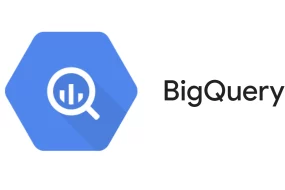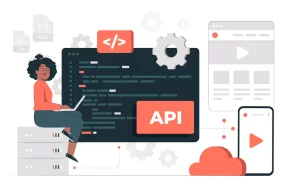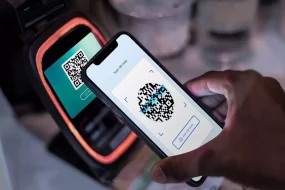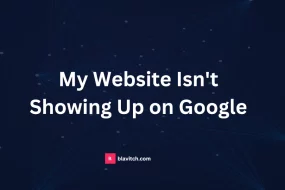
In the ever-changing landscape of business, having a clear roadmap to success is like striking gold. But what if you could create a treasure map for your business? That’s where the Business Model Canvas (BMC) comes into play.
It’s not just a simple tool; it’s a magic wand for entrepreneurs, startups, and established businesses alike. In this comprehensive guide, we’ll embark on a journey to discover the remarkable usefulness of the Business Model Canvas and how it can be your compass to navigate the turbulent waters of the business world.
The Canvas That Transforms Your Business
Let’s start our adventure by understanding what the Business Model Canvas is and why it’s more than just a chart on a wall.
What is the Business Model Canvas?
The Business Model Canvas, often lovingly referred to as BMC, is a fantastic creation by Alexander Osterwalder and Yves Pigneur in their book “Business Model Generation.” Imagine it as the treasure map where X marks the spot for your business success. It’s a one-page framework that lays out nine crucial building blocks, each representing a different aspect of your business:
- Customer Segments: Who are the people you want to serve? Identifying your customers is the first step.
- Value Proposition: What makes your product or service unique? Why should your customers choose you?
- Channels: How will you reach your customers? It’s like choosing the best ship to sail.
- Customer Relationships: What’s the vibe between you and your customers? Friendly? Professional? Online? In-person?
- Revenue Streams: Where’s the treasure chest? How do you make money?
- Key Resources: These are your secret weapons – assets, and resources to make the magic happen.
- Key Activities: These are your daily spells – the core actions you must take.
- Key Partnerships: Your business allies – who’s got your back in this adventure?
- Cost Structure: What’s the cost of the treasure hunt? Where should you spend your doubloons?
Now that we’ve got the map, let’s look at why it’s so invaluable.
Unlocking the Magic: The Usefulness of the BMC
The Business Model Canvas is like a Swiss Army knife for your business strategy. It’s got more uses than you’d expect, and here’s how it transforms your business:
1. Clarity and Focus
Imagine wandering through a dense forest without a map. Scary, right? That’s what it’s like running a business without a clear strategy. The BMC simplifies complex business models into a single page, like a treasure map, providing clarity and focus. You’ll no longer feel lost, not knowing where to steer your ship.
2. Enhanced Communication
In the pirate world, everyone needs to understand the Captain’s plan. Similarly, in the business world, the BMC is your shared language. It ensures everyone on your team knows the strategy, making collaboration smoother and more efficient.
3. Adaptability
Just like a pirate ship that can change course at any time, businesses need to adapt to survive. The BMC allows for quick pivots and changes to your strategy. You can test new routes without the fear of sinking.
4. Innovation
Arrr, innovation is the wind in your business sails! The BMC encourages creative thinking and innovation. It prompts you to challenge assumptions and come up with ingenious solutions. Your crew (team) will appreciate the spirit of adventure!
5. Cost-Effective
Every pirate needs to manage their booty wisely. Creating a Business Model Canvas is more cost-effective than crafting a traditional business plan. It saves time and resources, something every business captain treasures.
6. Improved Decision-Making
The BMC is like a magical crystal ball that lets you see into the future of your business. It helps you evaluate the impact of different choices and scenarios, making decisions more informed and data-driven.
Charting Your Course: Creating a Business Model Canvas
Now that you’re all pumped up about the BMC, let’s embark on a quest to create one for your business. Hold onto your hats, because this is where the real adventure begins.
Step 1: The Blank Canvas
Imagine a blank piece of parchment as your treasure map. Start with a clean slate, either on a physical board or using digital tools.
Step 2: Customer Segments
Like a true explorer, identify your customer groups. Who’s out there waiting for your treasure?
Step 3: Value Proposition
What’s the unique treasure (product or service) you offer? Make it sparkle!
Step 4: Channels
Plot your routes. How do you reach your customers? Map out your course.
Step 5: Customer Relationships
Determine the kind of relationship you want to build with your customers. Is it friendly like first mates or strictly business?
Step 6: Revenue Streams
Ahoy, where’s the treasure chest? How do you make your doubloons?
Step 7: Key Resources
Identify your essential assets – your ship, your crew, and your secret map.
Step 8: Key Activities
These are your daily rituals – what do you do to keep the ship sailing and the treasure safe?
Step 9: Key Partnerships
Who are your allies in this grand adventure? Seek allies who can help you conquer uncharted waters.
Step 10: Cost Structure
What’s the cost of the adventure? Calculate the doubloons you’ll need.
Step 11: Review and Refine
Once you’ve marked your treasure on the map, take a step back. Review your Business Model Canvas and see if everything aligns with your overall vision. If not, don’t hesitate to make course corrections.
Secrets of Successful Treasure Hunts
Creating a Business Model Canvas is just the beginning of the adventure. Here are some tips to make the most of your treasure map:
- Collaborate: Share the treasure map with your crew (team) and allies. Their insights can make your map more accurate.
- Regular Updates: The business sea is never still, and neither should your map be. Keep it updated as your business evolves.
- Market Research: Study the market like a seasoned explorer. Know your customers and competition inside-out.
- Be Concise: Use clear and straightforward language. The goal is clarity, not confusion.
- Test Assumptions: Don’t let any assumptions go unchallenged. Be open to change.
- Use Visuals: Visual aids make your map more engaging. It’s easier to navigate with a map than just a list of directions.
- Prioritize: Highlight your most crucial building blocks. Know where to dig for treasure.
- Experiment: Don’t be afraid to explore new routes and strategies. The treasure might be just around the corner!
Real-Life Treasure Maps: Examples of BMC
To illustrate the incredible usefulness of the Business Model Canvas, let’s take a look at two renowned companies – Airbnb and Spotify – and see how they’ve used this magical tool in their treasure hunts.
Airbnb
Customer Segments: Travelers seeking unique accommodations and hosts looking to rent out their spaces.
Value Proposition: A platform connecting travelers to unique and affordable lodging options worldwide.
Channels: Website and mobile app for booking accommodations,
with user reviews and photos.
Customer Relationships: Online messaging and support for both travelers and hosts, ensuring trust and satisfaction.
Revenue Streams: Commission on each booking and additional services like Airbnb Experiences.
Key Resources: Technology platform, a global network of hosts, and a trusted brand.
Key Activities: Maintaining the platform, ensuring quality standards, and marketing.
Key Partnerships: Collaborations with hosts, governments, and travel organizations.
Cost Structure: Investments in technology, customer support, and marketing.
Spotify
Customer Segments: Music enthusiasts looking for a convenient and affordable way to access music.
Value Proposition: A music streaming platform with a vast library, personalized playlists, and the ability to discover new music.
Channels: Mobile and desktop apps, partnerships with device manufacturers.
Customer Relationships: Providing easy-to-use, personalized music streaming with premium features.
Revenue Streams: Premium subscriptions, advertising, and partnerships with artists and record labels.
Key Resources: Music library, technology platform, and user data.
Key Activities: Music licensing, platform development, and content curation.
Key Partnerships: Record labels, artists, and advertisers.
Cost Structure: Licensing fees, technology development, and marketing expenses.
These real-life examples demonstrate the power of the Business Model Canvas in simplifying complex business models and turning them into actionable plans.
Chart Your Course to Success
The Business Model Canvas isn’t just a chart; it’s a treasure map for your business. It offers clarity, fosters innovation, and makes decision-making a breeze. With this tool, you can navigate the turbulent seas of business, adapt to changes, and thrive in an ever-evolving marketplace.
So, grab your compass (the BMC), gather your crew (team), and set sail on the exciting voyage to business success. You’re the captain of your ship, and with the Business Model Canvas in hand, there’s no treasure too hidden, no sea too treacherous, and no goal too distant. Set your course, and may your sails be forever full of wind!







